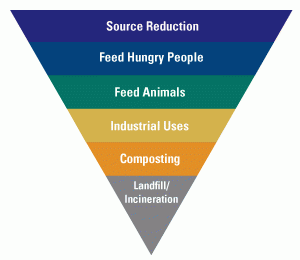
Since we’ve been discussing the ins and outs of worm composting here on No Impact Man, I thought we might take a look at the important whys and wherefores of diverting food from landfills.
According to the EPA:
“The decomposition of food and other waste under anaerobic (without oxygen) conditions in landfills produces methane, a greenhouse gas (GHG) 21 times more potent than carbon dioxide. Landfills are the largest human-related source of methane in the United States, accounting for 34 percent of all methane emissions. Recovery (i.e. food donations) and recycling (i.e., composting) diverts organic materials from landfills and incinerators, thereby reducing GHG emissions from landfills and waste combustion.”
Meanwhile, food leftovers are the single largest component of the waste stream by weight in the United States. Americans throw away more than 25 percent of the food we prepare. We throw away 96 billion pounds of food a year.
The most important method of reducing food-scrap associated greenhouse gases, therefore, is to waste less food (see the diagram above for the EPA’s food waste recovery hierarchy). Here in No Impact land, we waste less food by cooking less, saving leftovers for later, and eating food before it goes bad (not particularly complicated or high tech). Scraps and rinds go to the worms.
But if you’re not into the slimies, there are plenty of food waste recovery (i.e. food donation through organizations like Second Harvest) and recycling programs (i.e. composting and feeding to animals which you can find by contacting your city government or local environmental organization) to participate in all over the United States. Several local governments provide curbside collection of homeowner food waste for composting at municipal facilities.
PS If you’re enjoying this blog, please let more readers know about it by linking to it on your own blog or using the links below to email it around, favorite it on Technorati, Dig it, list it on del.icio.us or Stumble it. Thanks!